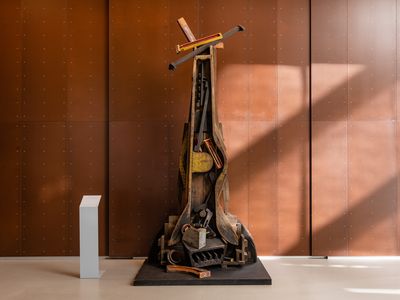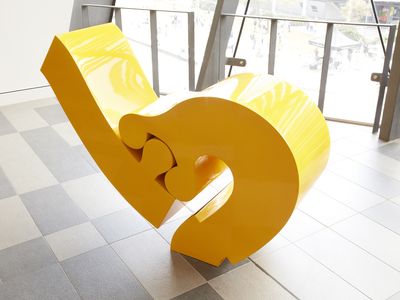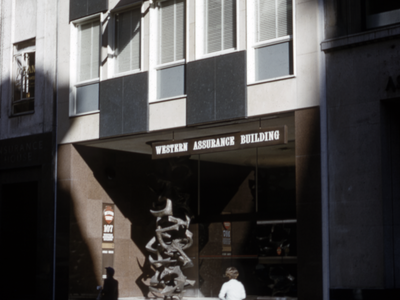Margel Hinder
Growth Forms
1959
brazed copper sheet over steel armature
410 x 150 cm
Level 4 entrance foyer, UTS Tower Building [CB01.04]
Margel Hinder was one of the most significant Australian sculptors of the 20th century. Her inventive and curious approach to new industrial materials and production methods ushered in a new era of public art in Australia.
In 1959, Margel Hinder was commissioned to create an abstract four-metre-high braised copper and steel sculpture for government architect Peter Johnson’s Western Assurance Building in Pitt Street. Conceived as spanning floor to ceiling, Growth Forms is a porous, organic structure that can be likened to the natural forms of bones or thorns. The work was initially conceived as a collaboration between Hinder and Johnson to ‘activate’ the public space of the site and was Hinder’s first corporate commission.
In 1980, the Western Assurance Building was sold, and the developer began to cut the sculpture up for scrap metal. With intervention from both the Art Gallery of New South Wales and the New South Wales State Architect it was saved and reassembled by the artist. In 1997, Growth Forms was donated to UTS by Lend Lease Developments, in a process led by the original commissioning architect Peter Johnson, who was by this time UTS Chancellor.
…it is meant to convey a feeling of vitality and dynamic quality appropriate to an ultra modern building designed with simplicity. – Margel Hinder
Following a renewed interest in the artist’s work after the retrospective Margel Hinder: Modern in Motion at the Art Gallery of New South Wales and Heide Museum of Modern Art, the sculpture was conserved and relocated to a prominent new position in the foyer of the UTS Tower.
Alongside this conservation project, the artist Diana Baker Smith has been developing She Speaks in Sculpture, a UTS Gallery exhibition of new works that parallel the extraordinary journey of Hinder’s sculpture with the tension between public art and urban development in Sydney, artist moral rights and the politics of art history. The exhibition opens at UTS Gallery on 19 July.
In addition to the sculpture itself, the UTS Art Collection is also fortunate to have one of the maquettes (small scale models) for Growth Forms created by Hinder during the design process.
Margel Hinder (1906–1995) was born in New York, NY and trained in Buffalo and at the School of the Boston Museum of Fine Art before emigrating to Australia in the early 1930s with her Australian-born husband, Frank. Margel and Frank Hinder both played an important role in the development of modernism in Australia, working and studying with Eleonore Lange and artists associated with the Crowley-Fizelle School in Sydney. The Hinders were founding members of the Contemporary Art Society NSW in the late 1930s, and later, the Society of Sculptors and Associates that formed in 1951. Margel Hinder was also a teacher, at the National Art School and later from her own studio.
Other important commissions completed by Margel Hinder include the Captain James Cook Memorial Fountain in Civic Park, Newcastle (1961); the Reserve Bank Sculpture in Martin Place, Sydney (1962); the Northpoint Fountain, North Sydney (1977) and others in Canberra, Adelaide and Melbourne. As testament to her lasting contribution to Australian modernist abstraction, Margel Hinder’s smaller sculptures and associated works are held by state and regional collections including the Art Gallery of NSW, Bathurst Regional Art Gallery, the Lewers Bequest and Regional Art Gallery, corporate and university collections including Deakin University and the University of Sydney.



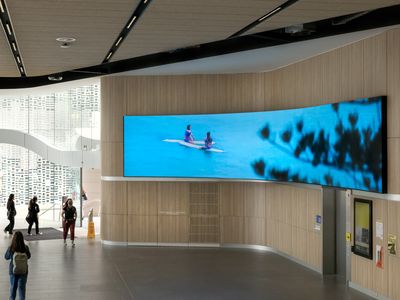

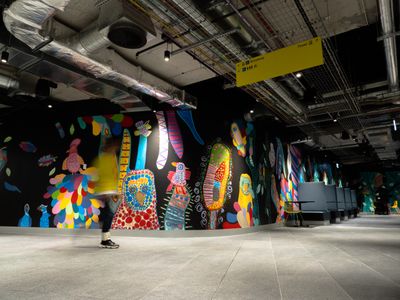
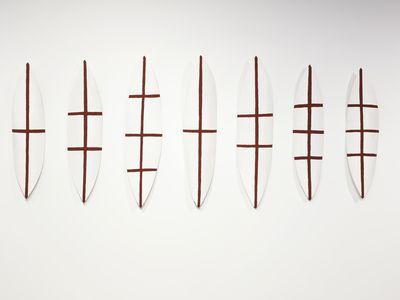
/https://uts-art-prod.s3.amazonaws.com/media/dd/images/3b7814e97b4b5428c7efccb0692cb077.jpg)
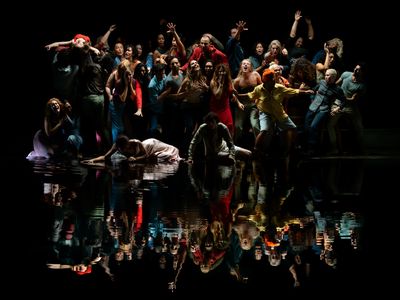
/https://uts-art-prod.s3.amazonaws.com/media/dd/images/35b09f6824a0f758a2c126325ff22e5f.jpg)
